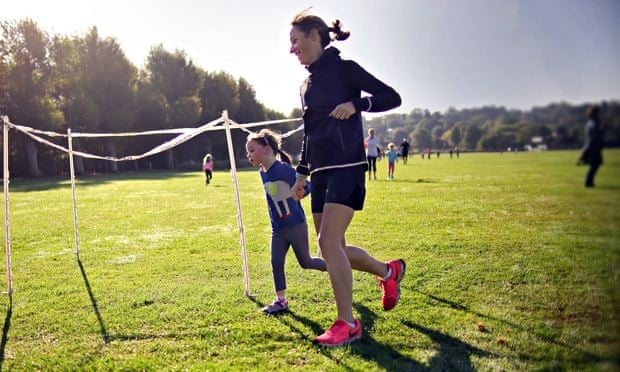
Some children are born sporty, some achieve a certain level of begrudging sportiness, others have it thrust upon them, often with accompanying bribery and/or threats. Some are so reluctant it seems almost cruel, but the statistics are stark. Almost a fifth of four to five-year-olds – and a third of 10 to 11-year-olds – are overweight or obese. Even toddlers get far less physical activity than they should.
As parents, we all know they should do more. But how to encourage those whose idea of a good time is nestling on the sofa with Frozen for the 351st time? Indeed, how to not merely encourage but to instil a genuine love of activity?
For my sofa-inclined six-year-old, it’s a delicate balancing act. Her natural inclination is always to say no to new things – and while I don’t ever want to force her, there are activities I know she will love if she would just give them a chance. Her school just started a yoga club – cue the usual hesitance to sign up – two weeks later her favourite activity is competitive downward dogs with her little sister.
I’ll admit that my encouragement/reward system also revolves rather heavily around ice-cream, but then, isn’t that half the reason I exercise myself, so I can indulge afterwards?
Young children are natural sprinters – short bursts of frenetic activity, followed by claims of exhaustion and the need for a smoothie, only to be sprinting off again a second later. So the best activities are those that capitalise on this. My own daughter tends to moan her way around the first lap of our local junior parkrun, proclaiming sudden hideous injuries (“I think I broke my ankle! I might need a plaster!”) and exhaustion. The second lap she perks up, and the final 100m or so she is off: “Time for top speed now Mummy, remember I beat you last week!” Seconds later she’s putting on an even more impressive sprint to the cafe with her friend for the post-run ice-cream.
So make activity sociable, and remember that your own definition of exercise is not theirs – hanging upside down from the climbing frame is a totally legitimate sport, honest. And, of course, set an example. Get off the sofa yourself – don’t blame me if no one buys you ice cream after.
Parkrun may just have celebrated its tenth birthday but it already has an offspring. Junior parkruns are springing up around the country – 2km free timed runs, mostly in local parks, staffed by enthusiastic volunteers, for 4 to 14-year-olds. If there isn’t one near you, consider starting your own. Go Run for Fun are also setting up nationwide events to get young children running.
Like the adult version, junior parkrun gives you an official time from a scanned barcode when you finish, delivered by email later that day. I don’t show my daughter these times – she’s never asked, doesn’t seem bothered, yet might just find it discouraging that she didn’t beat her best time. She doesn’t know what a PB is yet – plenty of time for that later.
